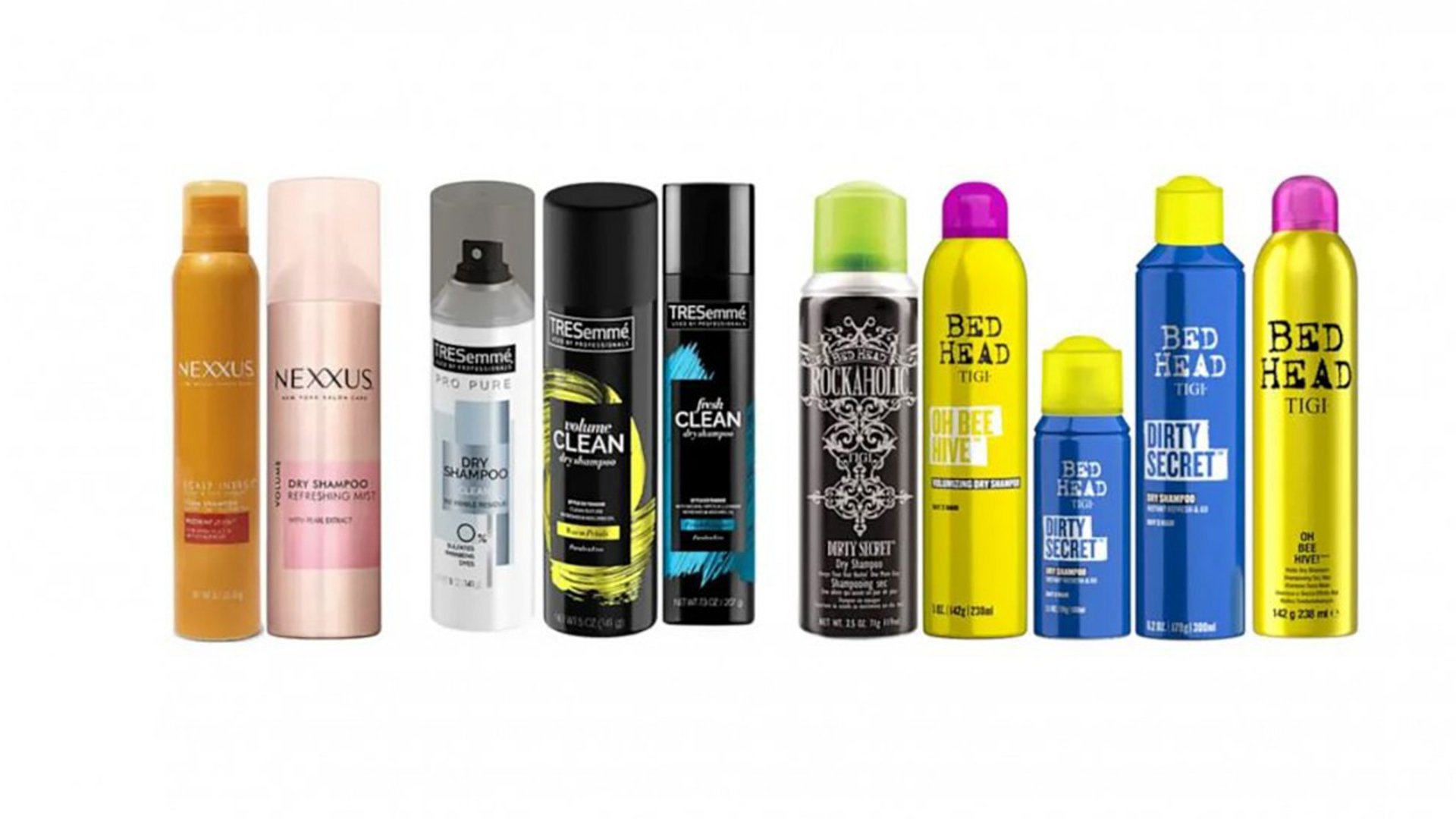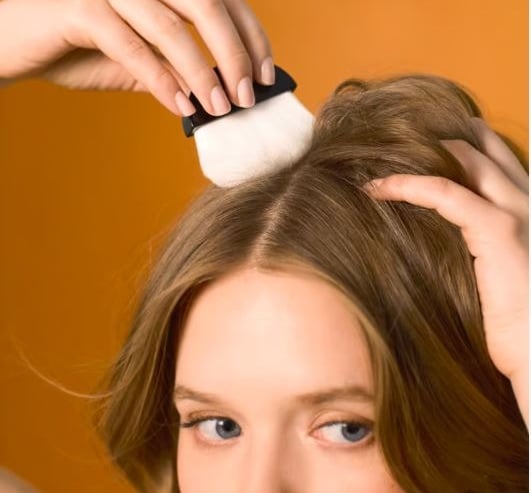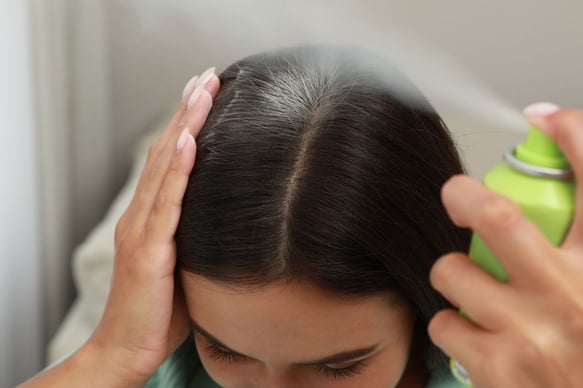
DIY Dry Shampoo: Ditch the Butane and Parfum for a Safer Alternative
Store-bought dry shampoos often contain harmful chemicals like butane, propane, and artificial fragrances, which can cause respiratory issues, scalp irritation, and even hormone disruption. This DIY dry shampoo recipe offers a safer, eco-friendly, and cost-effective alternative using natural ingredients that keep your hair fresh without the risks.
HEALTH
3/23/20254 min read
DIY Dry Shampoo: Ditch the Butane and Parfum for a Safer Alternative
I've been making and using my own dry shampoo for over five years now. It started as a way to save money and reduce waste—eliminating yet another product that I would throw away after it was used up. At the time, I was just looking for a more sustainable option. But in the last year or so, I’ve learned that making my own dry shampoo isn’t just cost-effective and eco-friendly—it’s also much safer for my health. Many off-the-shelf dry shampoos contain harmful chemicals that do nothing to support good health and, in some cases, may actually cause harm.
I started researching the ingredients in commercial dry shampoos and was shocked by what I found. From butane-based aerosols to mystery “parfum” formulas, many of these products contain chemicals that irritate the scalp, disrupt hormones, and contribute to long-term health concerns. Even worse, some brands have been found to contain benzene, a known carcinogen. That’s when I knew I had made the right choice in switching to a homemade version.
Why You Should Avoid Butane and Parfum in Dry Shampoo
Environmental Harm: These volatile organic compounds (VOCs) contribute to air pollution and ozone depletion, making aerosol dry shampoos a poor choice for the environment.
Benzene Contamination: Studies have found that some dry shampoos contain benzene, a cancer-causing chemical, as a contaminant in aerosol propellants.
A 2022 study by Valisure, an independent laboratory, found benzene in several popular dry shampoo brands, leading to recalls. The contamination likely came from butane-based propellants, making it clear that avoiding aerosol dry shampoos altogether is a safer choice.






1. Butane, Propane, and Isobutane: Harmful Aerosol Propellants
Most commercial dry shampoos come in aerosol cans, which rely on propellant gases like butane, propane, and isobutane to spray the product. While they make application easy, they come with serious risks:
Respiratory Irritation: Inhaling these gases can cause dizziness, headaches, and breathing difficulties, especially for those with asthma or sensitivities.
Skin and Scalp Irritation: Butane-based dry shampoos can dry out your scalp, leading to itchiness, flakiness, and potential hair damage over time.
2. "Parfum" (Fragrance) – A Hidden Chemical Cocktail
The term “parfum” (or fragrance) on an ingredient list might seem harmless, but it’s actually an umbrella term for hundreds of undisclosed chemicals. Many of these chemicals can negatively impact health:
Hormone Disruption: Many synthetic fragrances contain phthalates, which are known endocrine disruptors and can interfere with hormone function.
Allergic Reactions & Sensitivities: Artificial fragrances can cause headaches, dizziness, skin irritation, and breathing issues.
Long-Term Health Risks: Some fragrance chemicals are classified as potential carcinogens, yet companies are not required to disclose their specific fragrance formulas.
I personally used to love the fresh scent that store-bought dry shampoos provided, but once I learned how parfum can contain harmful chemicals that disrupt hormones and trigger allergic reactions, I knew I had to make a change. That’s when I started using essential oils in my DIY dry shampoo, and I haven’t looked back since!
A Safe, All-Natural DIY Dry Shampoo Recipe
Instead of exposing yourself to harmful ingredients, try making your own non-toxic, eco-friendly dry shampoo at home. This DIY recipe is effective, affordable, and completely customizable!
Why This Works:
✅ Arrowroot/cornstarch absorbs excess oil without harsh chemicals. ✅ Cocoa powder and activated charcoal blend seamlessly into darker hair. ✅ Essential oils add fragrance naturally while promoting scalp health.
I’ve been using this homemade dry shampoo for years, and it works just as well—if not better—than store-bought versions. Plus, I can tweak the scent and ingredients depending on what I need. It’s incredibly simple to make, lasts a long time, and keeps my scalp feeling fresh without the worry of harmful additives.
Why Make the Switch to DIY Dry Shampoo?
By making your own dry shampoo, you: ✅ Avoid harmful chemicals like butane, propane, and artificial fragrances. ✅ Reduce environmental impact by eliminating aerosols and plastic waste. ✅ Customize it for your hair type and scent preference. ✅ Save money—this DIY recipe costs pennies compared to store-bought brands.
Many people assume that homemade alternatives don’t work as well, but I can personally say that this DIY dry shampoo has been a game-changer. Not only do I avoid harmful chemicals, but I also feel good knowing that I’m reducing waste and protecting my health in the long run.
Final Thoughts
Many commercial dry shampoos may seem convenient, but their ingredients can pose serious health risks. With butane-based aerosols irritating the lungs and scalp, and synthetic fragrances hiding undisclosed chemicals, it’s time to switch to a safer alternative.
If you’re looking for a cost-effective, eco-friendly, and health-conscious option, give this DIY dry shampoo a try. You might just find, like I did, that making your own beauty products is not only better for your health but also incredibly rewarding.
Have you made the switch to homemade dry shampoo? I would love for you to share your experience!
Ingredients:
1/4 cup arrowroot powder or cornstarch (absorbs oil)
1 tablespoon cocoa powder (for brunettes) or activated charcoal (for dark hair) (optional for color blending)
1/4 teaspoon cinnamon (optional for a warm scent)
3-5 drops essential oil (lavender, peppermint, or rosemary for a fresh, natural scent)
Instructions:
Mix all ingredients in a small bowl. Adjust cocoa powder for darker hair tones.
Store in an airtight container or a clean, empty spice jar for easy application.
Apply using a makeup brush or sprinkle a small amount onto roots, then massage in with fingers or a hairbrush.
